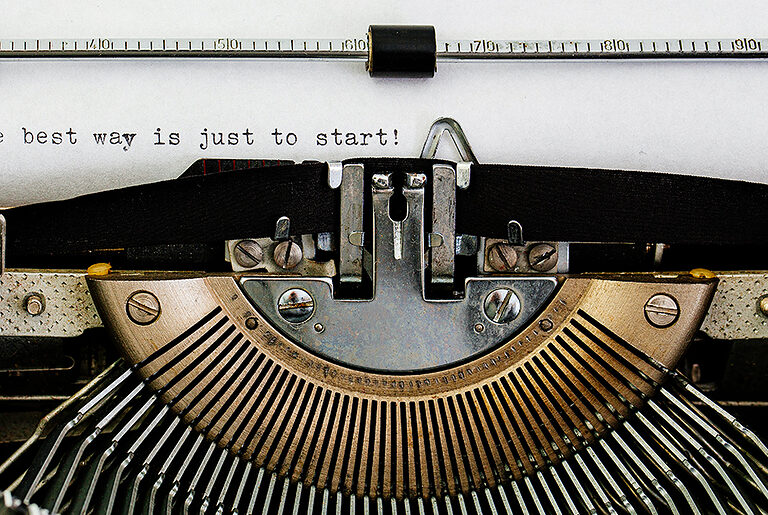Are you looking for a new way to make money? Are you tired of your day job and want to start working for yourself? If so, then becoming a freelancer may be your right option! This post will outline the 9 simple steps for how to become a freelancer. We’ll also provide some tips on how to find work and how to market yourself. So read on and learn how to start your own freelance business today!
There are two primary options that currently employed people have to take to become successful freelancers. They are starting a side hustle that they can grow or go all out into a full-time freelancing career. There is no easy way to decide which route to take, and both have their advantages and disadvantages.
If you’re currently employed, then a side hustle may be the best option to start with so that you can keep your day job and have a steady income coming in. Once your freelance business is established and you’re making enough money, then you can quit your day job and work for yourself full-time.
How to Become a Freelancer in 9 Steps
There is nothing more fulfilling than starting your own business, whether it is creating a product, becoming a consultant, or offering freelance services.
This 9-step method is a great way to start, and even if you think you know what you need to do, it is always worth checking that you have everything in place before you take the leap.
Establish your Aims and Goals
The first step is establishing your aims and goals, which will help you focus on the right things when starting out.
Ask yourself some key questions, such as:
- What services can I offer?
- What kind of businesses or clients would I like to work with?
- What are my core values?
- What is my ideal working day or week like?
- What do I want to achieve in the short, medium, and long term?
Establishing what you want to achieve from freelancing will help you understand how to get there.
Pick the Right Niche
Maybe you have had a hobby for a while that you think would be useful to others, such as graphic design, writing, consultation, financial planning, or anything else. They are great ways to get yourself into freelancing, as it is something that you are highly interested in and already have experience doing.
While it is possible to take your freelancing career in a completely different direction to something you have experience in, it will be a lot more of a struggle to get where you want to be as you need to learn the job while working.
Research Your Potential Clients
There is a fine line between people looking for something they know nothing about and those with vast knowledge of what they want and ideas of how to get there. For example, you could create logos for people starting a business for the first time, or you could write for college professors or big media.
While the end goal may be to work with the biggest and best companies, sustaining work with one or the other groups can be challenging.
Understanding where you fit into the puzzle will help you plan for your future and how to get there.
Set Prices for Your Services or Products
The next step is understanding how much you should charge for your services. This is something that can be tricky, especially when first starting out, as you do not want to undercharge and leave money on the table, but you also don’t want to overcharge and price yourself out of work.
There are a few different ways to set your prices:
- Charging by the hour
- Charging a flat rate per project
- Offering discounts
Each has its pros and cons, so it is worth considering what would work best for you and your business.
A great way to start is to determine your skill level and look at the prices that others charge for similar standards. For example, if you do something visual, you can search for similar products on freelancing websites and see if you could do the same standard of work in a time that would suit the price they charge.
Build a Portfolio
Once you know what services you can offer and how much you should charge, it is time to start putting together a portfolio or showcase of your work. This is something that potential clients will look at when deciding whether or not to hire you, so it is important to make sure that it is up to scratch.
Your portfolio should:
- Include your best work
- Showcase a range of skills
- Be easy to navigate
- Be up to date
If you are starting out, you may not have a lot of relevant work to show, in which case it is worth doing some pro bono work or taking on small projects at a lower rate to get some examples together.
Alternatively, you can create mockups or practice projects showing what you can do. For example, if you are a web designer, you could create a few different website designs that show off different styles and techniques.
Pick Your First Clients
Now that you know what you want to do and how much to charge, it is time to start picking your first clients. This can be a daunting task, especially if you don’t have relevant work experience, but you can do a few things to make it easier.
One way is to join freelancing platforms or websites that act as a middleman between freelancers and businesses or individuals who need their services.
Another way is to reach out directly to businesses or individuals that you think could benefit from your services. This can be a more time-consuming process, but it can be worth it as you can build up a long-term relationship with clients this way.
Finally, you could also look for work by networking with people in your field using sites like LinkedIn or attending industry events. This is a great way to get your name out there and meet potential clients face-to-face.
One thing that you should consider, though, is to take on work that you know you can complete in the time that the client wants it completed.
While pushing yourself is great, you need to start making money as soon as possible while setting up for the next step:
Gather Testimonials
After picking the jobs you know you can complete well in the time the client wants it done, you know that you should be getting some great reviews (and some more confidence). You will now be able to ask for testimonials that back up your ability and start landing you some bigger jobs.
It is important not to rush this step if possible – stay with small jobs until you are comfortable with them and have a base of testimonials.
Learn how to Market Your Business
You have your skills, prices, and some great testimonials; now it is time to start marketing yourself to get more clients. This doesn’t necessarily mean spending a lot of money on advertising, but there are some things that you can do to get noticed.
One way is to create a website or blog and write about your industry or niche topics. This will help you attract organic traffic from people who are interested in what you do and could become potential clients.
Another way is to use social media platforms such as Twitter, LinkedIn, and Facebook. These platforms are free to use and give you a great way to connect with potential clients as well as other freelancers who could help you out.
You could also look into paid advertising, but this can be expensive and may not be worth it if you are just starting out.
Get Organized
One of the most important things to do when running your own business is to get organized and stay on top of things. This includes:
- Your finances – make sure you keep track of your income and expenditure so that you can stay in the black
- Your time – use a time-tracking tool or app to help you stay on top of deadlines and budget your time correctly
- Your documents – create templates for any documentation that you need to speed up the process (such as proposals, invoices, etc.) and store them somewhere safe (such as in the cloud)
By staying organized, you will be able to work more efficiently and effectively, which will please your clients and make them want to come back for more.
Stay Up-to-Date
The business world is constantly changing, so it is important to stay up-to-date with the latest trends and developments in your industry. This will help you keep your skills current and show potential clients that you are an expert in your field.
One way to do this is to read relevant blogs and articles. You can also follow experts on social media or sign up for newsletters from reputable sources. Additionally, attending conferences or events related to your industry can help you network with others and learn about the latest trends.
Conclusion
So, how do you become a freelancer? The process can be daunting, but it is definitely achievable with the right skills and attitude. Follow these 9 steps, and you’ll be on your way to a successful freelance career.
The biggest thing you should consider, though, is it may take some time, so always keep pushing toward your goal!





